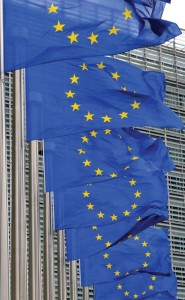Resources Magazine: Saving Europe’s Key Weapon against Climate Change
 Climate change is widely regarded as the greatest threat to the global environment. But the centerpiece of the European Union’s climate policy is being hobbled.
Climate change is widely regarded as the greatest threat to the global environment. But the centerpiece of the European Union’s climate policy is being hobbled.
That centerpiece is the cap-and-trade Emissions Trading System (ETS), under which companies buy and sell carbon reduction credits. The cause of the problems plaguing the European market is the presence of a two-gigaton surplus of emissions allowances. The oversupply is the result of a number of factors, including the economic downturn, the influence of carbon taxes and other complementary policies in several member states, an influx of certified reduction credits from international offsets, the banking of allowance leftovers, and the early auctioning of next phase allowances.
The surplus has created a problematic decline in the price of emissions allowances, which dropped as low as €2.81 in April 2013. Through the fall of 2013, prices hovered near €5, recovering somewhat to near €7 in early 2014. While low prices are generally good news, these are an order of magnitude lower than the estimated €32 to €63 needed to motivate investments necessary to achieve the European Union’s emissions reduction target.
If this situation looks familiar to some market followers, it’s because almost every previous cap-and-trade program has overestimated the costs faced by firms, causing initially high prices to fall.
What can be done? Solutions often suggested include revising emissions targets or retiring allowances. But these options would introduce new information and change the balance of supply and demand in the market, creating uncertainty for investors eyeing future price trends. For that reason, while initially intuitively appealing, they tend to fall from favor.
Another option exists to save the European climate emissions reduction market, and I believe it deserves more attention: the adoption of a price floor.
A price floor easily could be enforced by introducing a minimum price in allowance auctions. When a market’s price dips below the price floor, a portion of allowances is held back from being sold; this restricts supply and supports healthier, more stable market prices. That is part of the reason that a price floor is generally considered an important feature of good auction design. In fact, as my son pointed out to me, this is the same mechanism that one sees on eBay, where a seller can introduce a minimum price for bids that will be considered.
Detractors of the price floor idea have mischaracterized it as a tax, but it is certainly not a tax. A large portion of emissions allowances in the EU trading system are still given away for free, and they would not be affected. In fact, recipients of those allowances would benefit from the price support for the value of the allowances as an asset in the market.
Read the rest of this article.
About Dallas Burtraw
Dallas Burtraw is one of the nation’s foremost experts on environmental regulation in the electricity sector. For two decades, he has worked on creating a more efficient and politically rational method for controlling air pollution. He also studies electricity restructuring, competition, and economic deregulation. He is particularly interested in incentive-based approaches for environmental regulation, the most notable of which is a tradable permit system, and recently has studied ways to introduce greater cost-effectiveness into regulation under the Clean Air Act.
- Web |
- More Posts (31)

 Subscribe; to our RSS Feed
Subscribe; to our RSS Feed Tweets by @RFF_org
Tweets by @RFF_org 